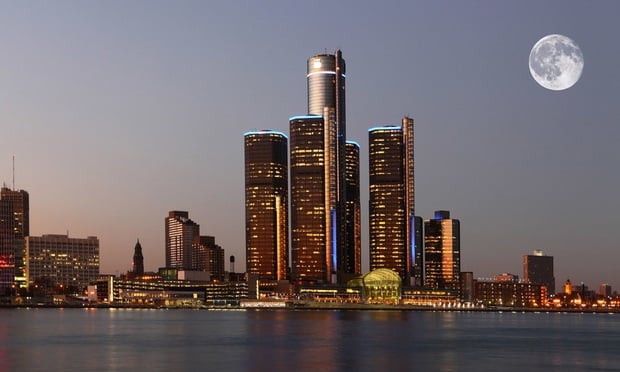DETROIT—Vacancy and net absorption in Detroit's industrial sector have now reached levels not seen in over 20 years, according to a report by Newmark Grubb Knight Frank on fourth quarter industrial trends data. And experts from the firm say the region still has a lot of capacity for growth.
"The metro Detroit market is essentially at full capacity," John DeGroot, vice president of research at NGKF, tells GlobeSt.com, mostly due to the resurgence of the US auto industry, which saw sales reach 17.4 million units in 2015, topping a record set in 2000. "There are ten mega distribution facilities with at least one million square feet in the region, and each is between 95% and 100% occupancy."
The overall vacancy rate fell 10 bps to just 6.6% during the fourth quarter, as just over 2.5 million square feet was absorbed. And net absorption for 2015 reached a historic high of just under 10 million square feet. During the economic recession, vacancy increased to around 16%, but since 2010, the industrial market has absorbed nearly 37 million square feet.
And this activity has also kicked off a construction boom. "Most of the new construction that you see coming into the market is being built for auto suppliers," adds Frederick J. Liesveld, executive vice president of NGKF and managing director of the Detroit office. He estimates about 2.4 million square feet is underway, and significantly, much of that is inside the boundaries of Detroit. The city does have a vacancy rate of 21.2%, but Liesveld says much of that product is somewhat older, so several companies have decided to build modern facilities.
Chrysler recently moved into a newly completed 190,000-square-foot logistical center at 2860 Clark St. in the city, and four other projects there totaling over 1.2 million square feet are currently under construction, the most activity in 12 years. Crown Enterprises is building one of the largest facilities, a 500,000-square-foot distribution facility for its Universal Truckload Services. And Sakthi Automotive is building a 540,000-square-foot expansion on Fort Street.
"Companies are looking for places to expand, so it's not surprising they are taking advantage of the opportunities the city of Detroit brings in terms of available land for development," Liesveld adds.
The suburbs of Detroit have fared especially well. In Southwest Oakland County, for example, the vacancy rate fell 50 bps to 6.6% as just over 423,000 square feet was absorbed. Overall absorption in 2014 was about 518,000 square feet and just over 195,000 square feet in 2013, but in 2015 the figure climbed to more than 1.1 million square feet.
And in Western Wayne County, the vacancy rate has been cut in half in the past two years, to less than 4%. To add supply to the market, real estate investment firm Ashley Capital has procured a 116-acre block of land between interstates I-96 and I-275 on the former GM Delco Chassis property for a proposed multi-tenant industrial park.
Macomb County's industrial market vacancy rate fell 30 bps to just 2.7% during the fourth quarter, as just over 554,000 square feet was absorbed. Developers have begun to respond. Sterling Group and J.B. Donaldson Co. recently purchased the former 144-acre Sunnybrook golf course in Sterling Heights. The site could potentially add one million square feet of build-to-suit land.
But Liesveld says the region has even far greater potential. "The great recession of '08 to '10 really brought down our lease rates and values." Average rents sank to $4.38 in 2010, and recently rose to $4.80. But until those numbers come up even further, many developers will be reluctant to launch new projects here. In fact, about 90% of the new projects are build-to-suits, a big change from the late 90s and early '00s when much of the new construction was done on spec. Based on the vacancy level and the robust demand, he thinks "six, seven or even ten million square feet should be in the air right now."
© Touchpoint Markets, All Rights Reserved. Request academic re-use from www.copyright.com. All other uses, submit a request to [email protected]. For more inforrmation visit Asset & Logo Licensing.







